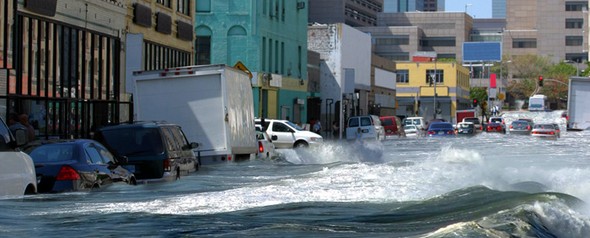Disastrous Sandy: The Financial Effects of a Historic Storm
Spanning more than 900 miles wide, Hurricane Sandy was the largest tropical weather system ever recorded in the Atlantic Ocean. The deadly storm devastated a number of communities when it came ashore along the heavily populated coastline of New Jersey and New York in late October.1
High winds and widespread flooding also shut down public transportation and left millions of homes and businesses without electricity for days, or for weeks in some cases.
The 12 states affected by Sandy’s destructive path typically account for nearly one-fourth of the nation’s gross domestic product (GDP), or roughly $13 trillion a day in economic output.2 Here’s a closer look at the financial toll that this natural disaster could take on the region and the United States as a whole.

Tough Losses
According to preliminary estimates, Sandy was responsible for nearly $50 billion in losses from business interruption and property damage. It is likely to join the list of costliest storms in U.S. history, surpassed only by Hurricane Katrina ($157 billion) in 2005 and possibly Hurricane Andrew ($54 billion) in 1992.3
Economic research firm Moody’s Analytics attributed about $30 billion to physical storm damage, divided somewhat evenly among households, businesses, and public infrastructure. The other $20 billion refers to losses resulting from at least two days of suspended business activity.4 Of course, loss estimates could change as the full scope of damage and necessary repair costs come to light.
A portion of lost business output could be made up later, but some types of losses are unlikely to be recouped. The airlines, for example, were forced to cancel more than 20,000 flights, and Wall Street’s two-day closure halted financial market trading at a cost of about $7 billion. Moody’s also reported that New Jersey should account for the lion’s share of lost business output (about 60%), followed by New York City (15%), Philadelphia (14%), and Washington, D.C. (11%).5–6
Covering the Costs
Insured losses could range from $10 billion to $20 billion. Fortunately, the private insurance industry is believed to have sufficient capital reserves to cover policyholder claims.7
The balance (or uninsured costs) will fall on the broader public in the form of flood insurance payouts and disaster assistance provided by FEMA, as well as on the affected businesses and households. The federal government’s National Flood Insurance Program has received more than 115,000 claims for which payouts could reach $7 billion.8 Beyond federal assistance, state and local governments and taxpayers may foot much of the bill for repairs and upgrades to public infrastructure such as roads, railways, airports, and water and sewer systems.
Temporary Disruption
Initially, business activity and job growth may take a noticeable hit. Economists have projected that Sandy could cut GDP growth by as much as half a percentage point in the fourth quarter of 2012.9 Some of the storm’s more immediate effects were evident in economic data reported in November, including a slowdown in retail sales and manufacturing.
Stalled business conditions in the affected areas were also responsible for a spike in new claims for state unemployment benefits that should be relatively short-lived. An increase of 78,000 initial claims was the biggest weekly jump since Hurricane Katrina in 2005.10
Rebuilding Boost?
Residents and businesses in some hard-hit areas will likely have to endure a long period of hardship and recovery. Sadly, some uninsured or underinsured small-business owners and households could face serious personal financial losses (including reduced asset values and net worth) and/or diminished income prospects.
It could be several months before large-scale repairs and rebuilding of damaged homes, buildings, roads, and bridges are under way. Government money still needs to be allocated and insurance claims must first be settled.
Because wages for construction jobs are typically higher than the average wage, some economists believe that a ramp-up in construction employment could have a modest beneficial effect on the broader economy.11 As a result, recovery spending could ultimately offset some losses or possibly even contribute to GDP growth in 2013.
1–2) NBCNews.com, October 30, 2012
3–5) CNNMoney, November 2, 2012
6) USA Today, November 1, 2012
7) The Wall Street Journal, November 1, 2012
8) The New York Times, November 12, 2012
9–10) Reuters, November 15, 2012
11) Associated Press, November 4, 2012
The information in this article is not intended as tax or legal advice, and it may not be relied on for the purpose of avoiding any federal tax penalties. You are encouraged to seek tax or legal advice from an independent professional advisor. The content is derived from sources believed to be accurate. Neither the information presented nor any opinion expressed constitutes a solicitation for the purchase or sale of any security. This material was written and prepared by Emerald. Copyright © 2013 Emerald Connect, Inc.

